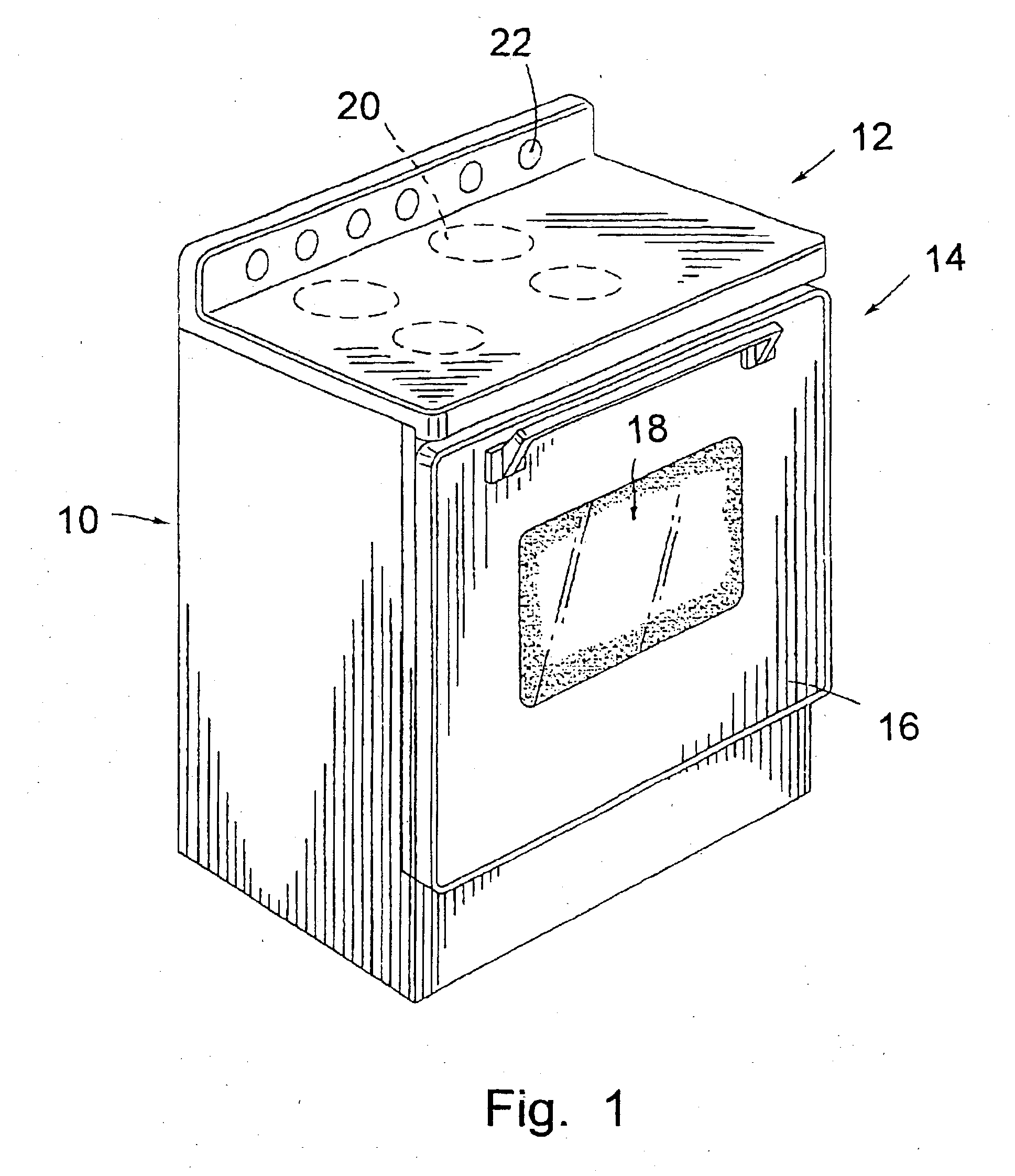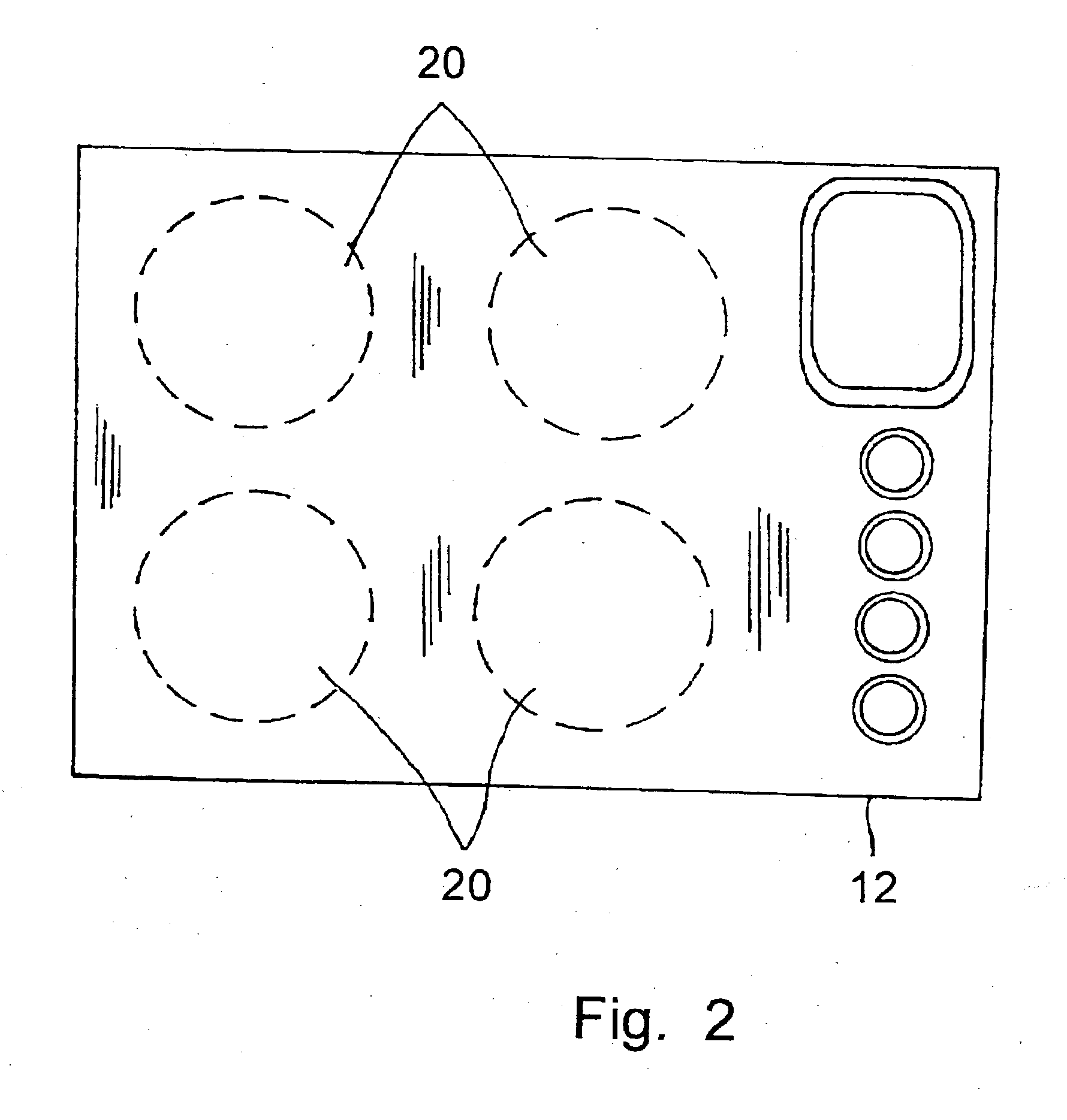Cooking stove and method for production and components thereof
- Summary
- Abstract
- Description
- Claims
- Application Information
AI Technical Summary
Benefits of technology
Problems solved by technology
Method used
Image
Examples
example no.1
EXAMPLE NO. 1
[0096] Starting composition (percent by weight): lithium oxide comprising three and eight tenths percent; sodium monoxide comprising five tenths percent; potassium monoxide comprising two tenths percent; magnesium oxide comprising nine tenths percent; barium oxide comprising one percent; zinc oxide comprising one and five tenths percent; aluminum oxide comprising twenty-one and five tenths percent; silicon dioxide comprising sixty-six and five tenths percent; titanium dioxide comprising two and four tenths percent; zirconium dioxide comprising one and seven tenths percent; Colored oxide (percent by weight): vanadium pentoxide comprising none. Reducing agent (percent by weight): antimony trioxide comprising one and five tenths percent; tin dioxide comprising none; other comprising none. Ceramization conditions: Nucleation seven hundred forty degrees Celsius; one-half hour. Crystallization eight hundred ninety degrees Celsius; one-half hour. Mossbauer measurements: Glassy...
example no.2
EXAMPLE NO. 2
[0097] Starting composition (percent by weight): lithium oxide comprising three and eight tenths percent; sodium monoxide comprising five tenths percent; potassium monoxide comprising two tenths percent; magnesium oxide comprising nine tenths percent; barium oxide comprising one percent; zinc oxide comprising one and five tenths percent; aluminum oxide comprising twenty-one and five tenths percent; silicon dioxide comprising sixty-six and five tenths percent; titanium dioxide comprising two and four tenths percent; zirconium dioxide comprising one and seven tenths percent; Colored oxide (percent by weight): vanadium pentoxide comprising three tenths percent. Reducing agent (percent by weight): antimony trioxide comprising one and five tenths percent; tin dioxide comprising none; other comprising none. Ceramization conditions: Nucleation seven hundred forty degrees Celsius; one-half hour. Crystallization eight hundred ninety degrees Celsius; one-half hour. Mossbauer meas...
example no.3
EXAMPLE NO. 3
[0098] Starting composition (percent by weight): lithium oxide comprising three and eight tenths percent; sodium monoxide comprising five tenths percent; potassium monoxide comprising two tenths percent; magnesium oxide comprising nine tenths percent; barium oxide comprising one percent; zinc oxide comprising one and five tenths percent; aluminum oxide comprising twenty-one and five tenths percent; silicon dioxide comprising sixty-six and five tenths percent; titanium dioxide comprising two and four tenths percent; zirconium dioxide comprising one and seven tenths percent; Colored oxide (percent by weight): vanadium pentoxide comprising three tenths percent. Reducing agent (percent by weight): antimony trioxide comprising none; tin dioxide comprising none; other comprising none. Ceramization conditions: Nucleation seven hundred forty degrees Celsius; one-half hour; Crystallization eight hundred ninety degrees Celsius; one-half hour. Mossbauer measurements: Glassy, none....
PUM
| Property | Measurement | Unit |
|---|---|---|
| Temperature | aaaaa | aaaaa |
| Length | aaaaa | aaaaa |
| Fraction | aaaaa | aaaaa |
Abstract
Description
Claims
Application Information
 Login to View More
Login to View More - R&D
- Intellectual Property
- Life Sciences
- Materials
- Tech Scout
- Unparalleled Data Quality
- Higher Quality Content
- 60% Fewer Hallucinations
Browse by: Latest US Patents, China's latest patents, Technical Efficacy Thesaurus, Application Domain, Technology Topic, Popular Technical Reports.
© 2025 PatSnap. All rights reserved.Legal|Privacy policy|Modern Slavery Act Transparency Statement|Sitemap|About US| Contact US: help@patsnap.com



